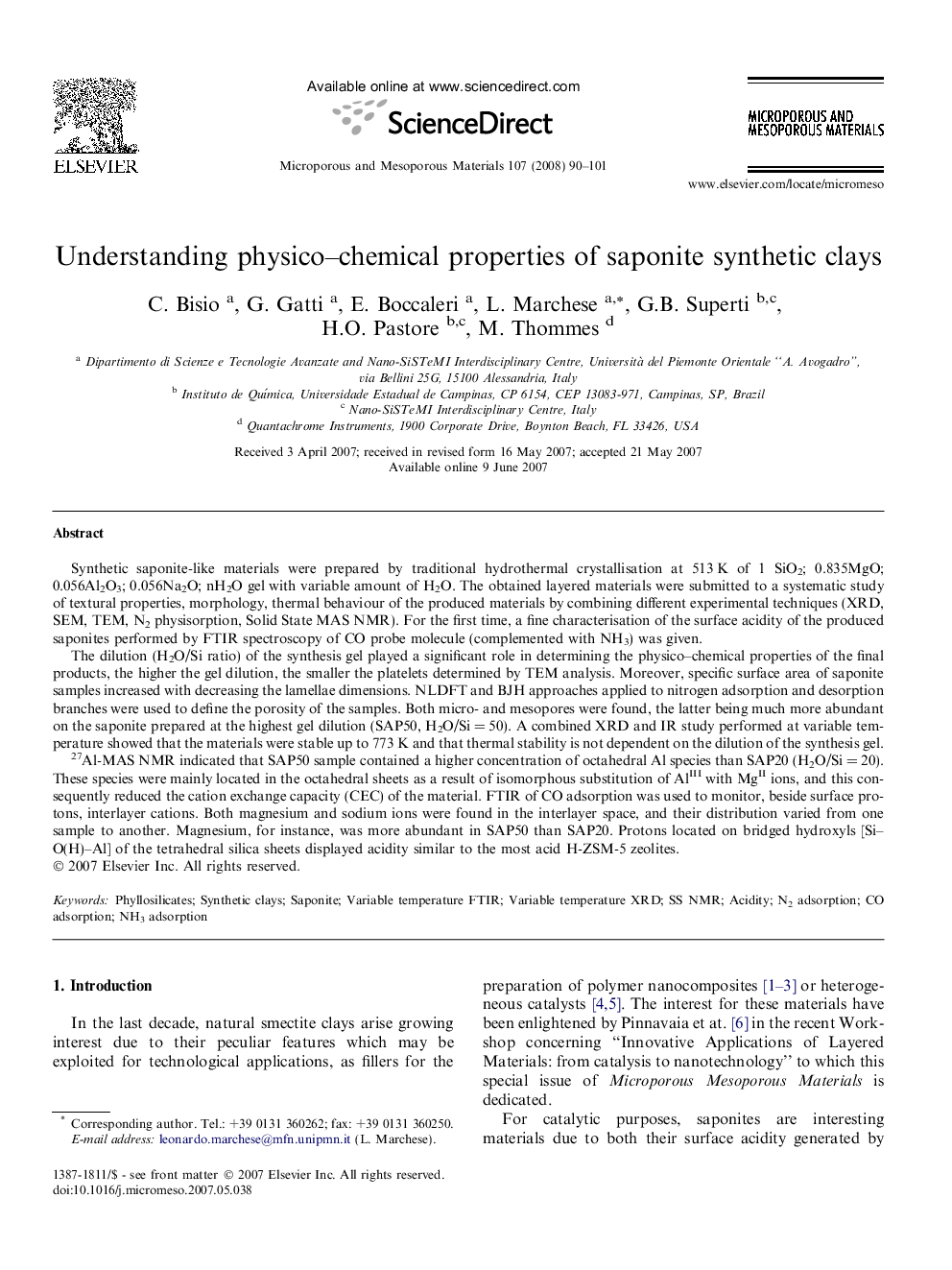| Article ID | Journal | Published Year | Pages | File Type |
|---|---|---|---|---|
| 76627 | Microporous and Mesoporous Materials | 2008 | 12 Pages |
Synthetic saponite-like materials were prepared by traditional hydrothermal crystallisation at 513 K of 1 SiO2; 0.835MgO; 0.056Al2O3; 0.056Na2O; nH2O gel with variable amount of H2O. The obtained layered materials were submitted to a systematic study of textural properties, morphology, thermal behaviour of the produced materials by combining different experimental techniques (XRD, SEM, TEM, N2 physisorption, Solid State MAS NMR). For the first time, a fine characterisation of the surface acidity of the produced saponites performed by FTIR spectroscopy of CO probe molecule (complemented with NH3) was given.The dilution (H2O/Si ratio) of the synthesis gel played a significant role in determining the physico–chemical properties of the final products, the higher the gel dilution, the smaller the platelets determined by TEM analysis. Moreover, specific surface area of saponite samples increased with decreasing the lamellae dimensions. NLDFT and BJH approaches applied to nitrogen adsorption and desorption branches were used to define the porosity of the samples. Both micro- and mesopores were found, the latter being much more abundant on the saponite prepared at the highest gel dilution (SAP50, H2O/Si = 50). A combined XRD and IR study performed at variable temperature showed that the materials were stable up to 773 K and that thermal stability is not dependent on the dilution of the synthesis gel.27Al-MAS NMR indicated that SAP50 sample contained a higher concentration of octahedral Al species than SAP20 (H2O/Si = 20). These species were mainly located in the octahedral sheets as a result of isomorphous substitution of AlIII with MgII ions, and this consequently reduced the cation exchange capacity (CEC) of the material. FTIR of CO adsorption was used to monitor, beside surface protons, interlayer cations. Both magnesium and sodium ions were found in the interlayer space, and their distribution varied from one sample to another. Magnesium, for instance, was more abundant in SAP50 than SAP20. Protons located on bridged hydroxyls [Si–O(H)–Al] of the tetrahedral silica sheets displayed acidity similar to the most acid H-ZSM-5 zeolites.
